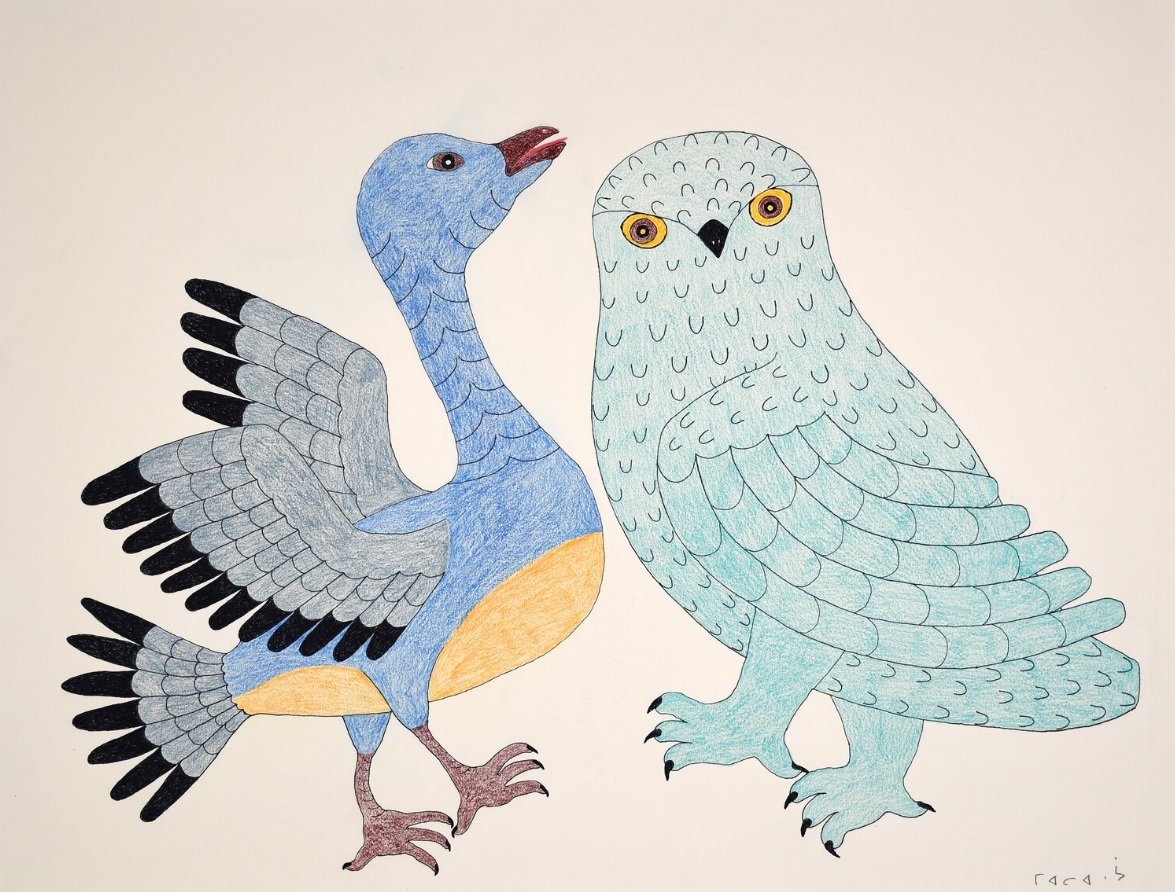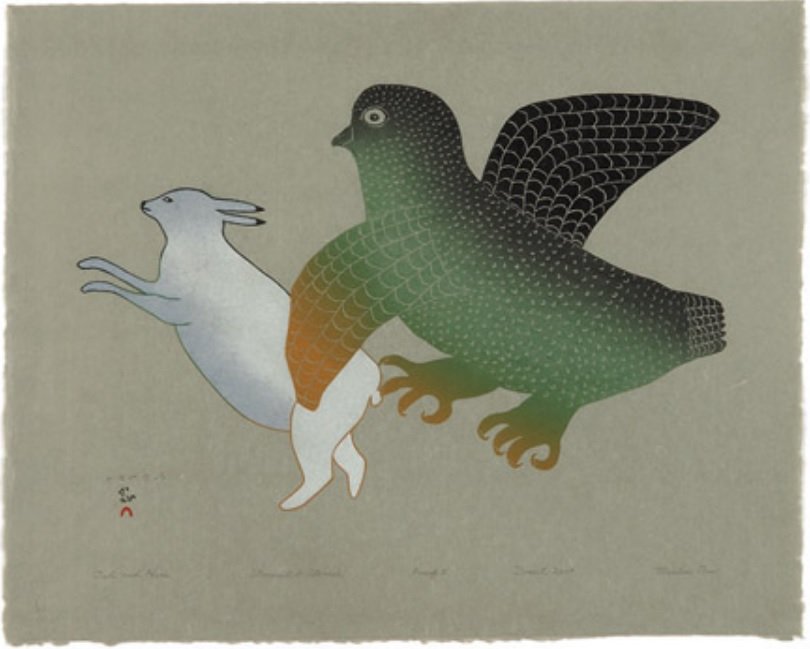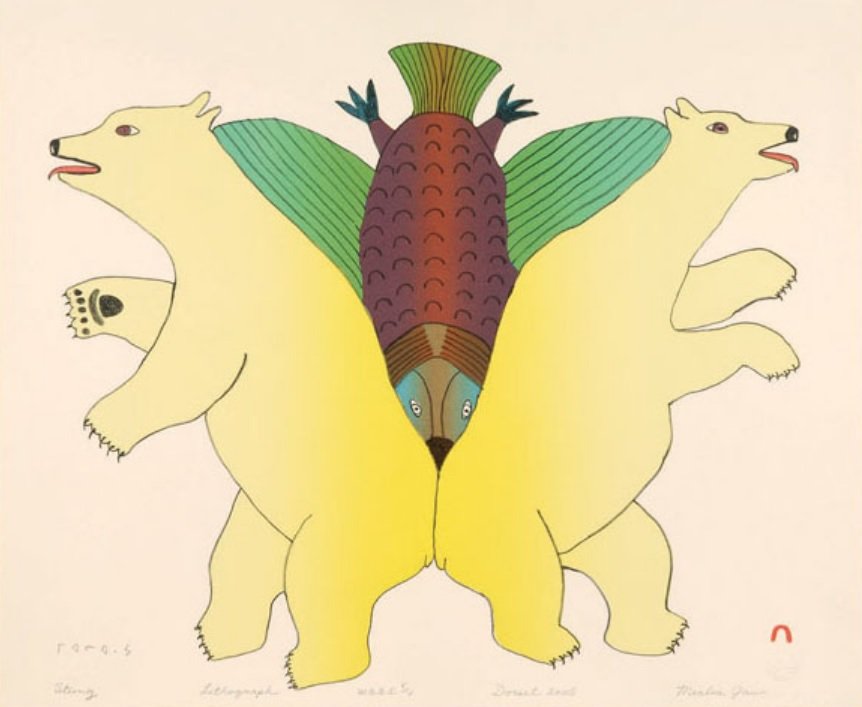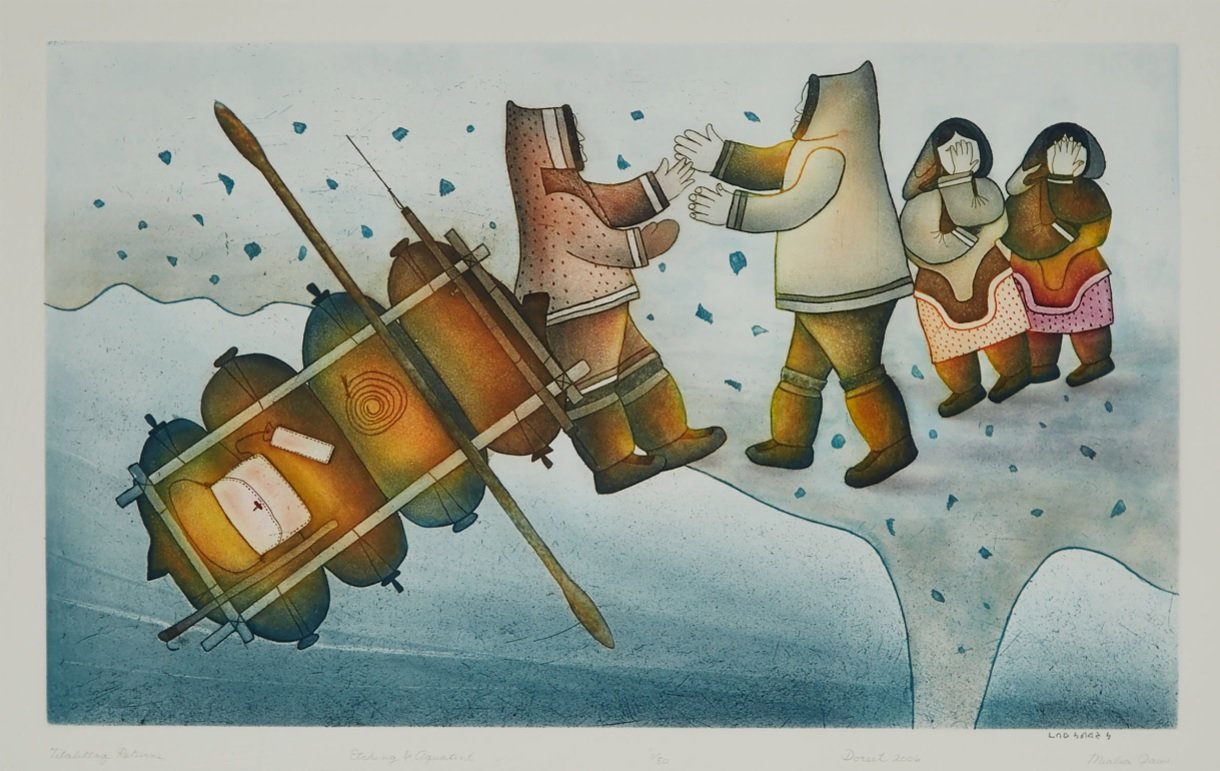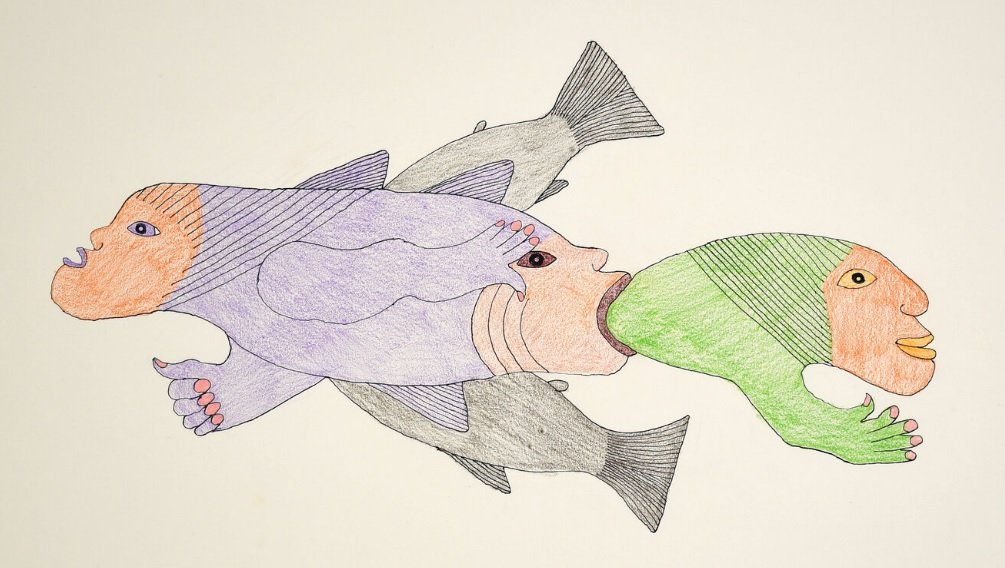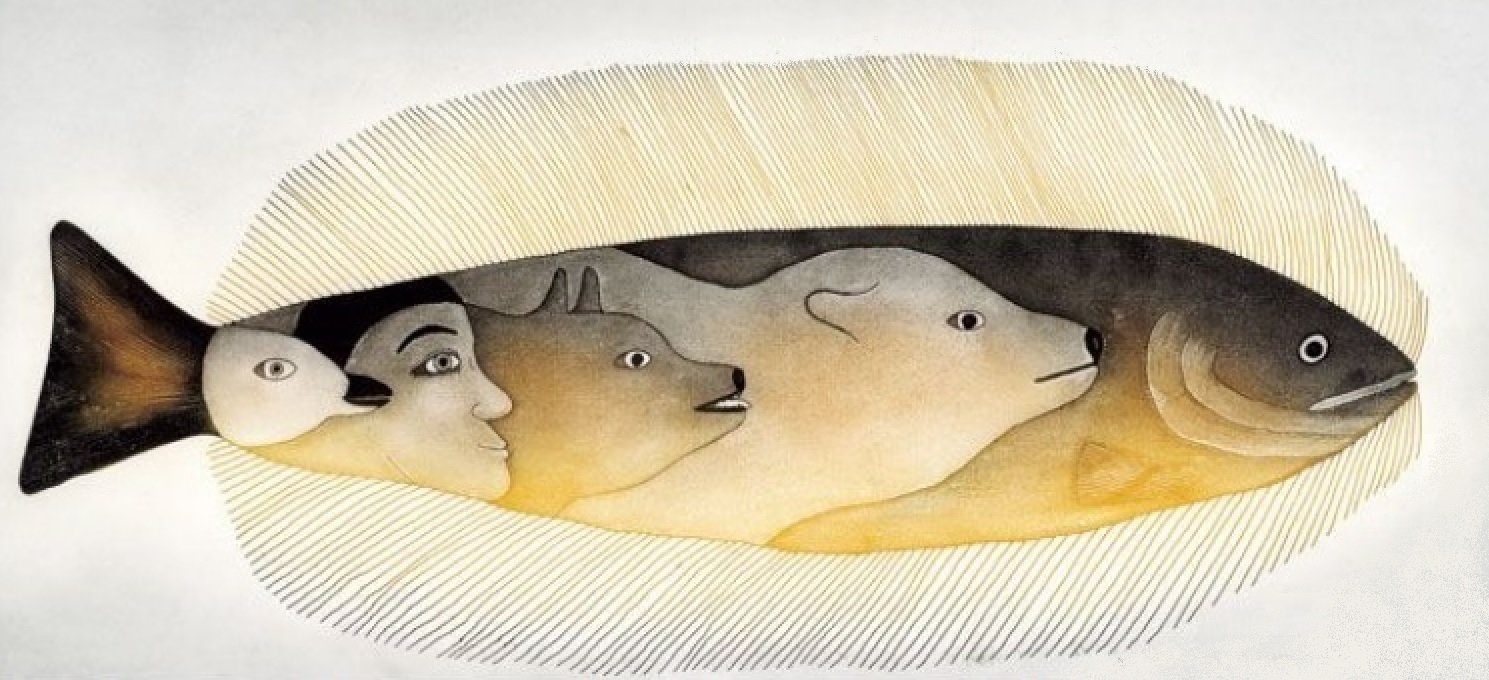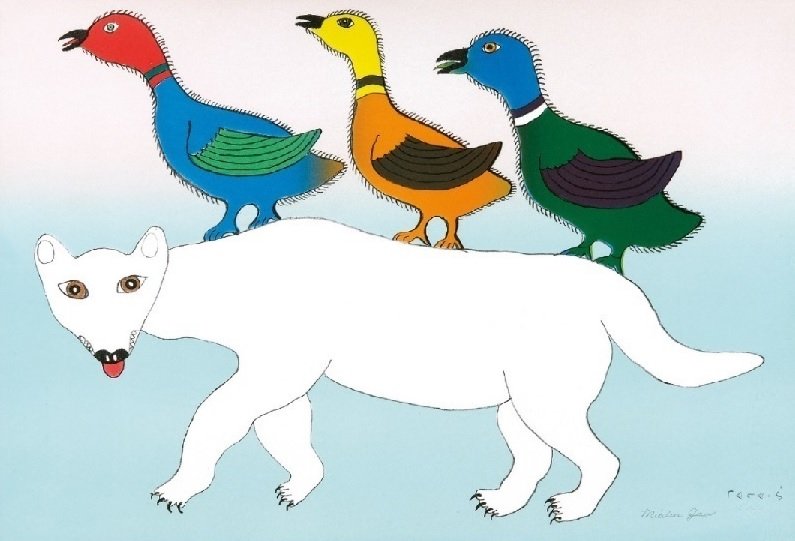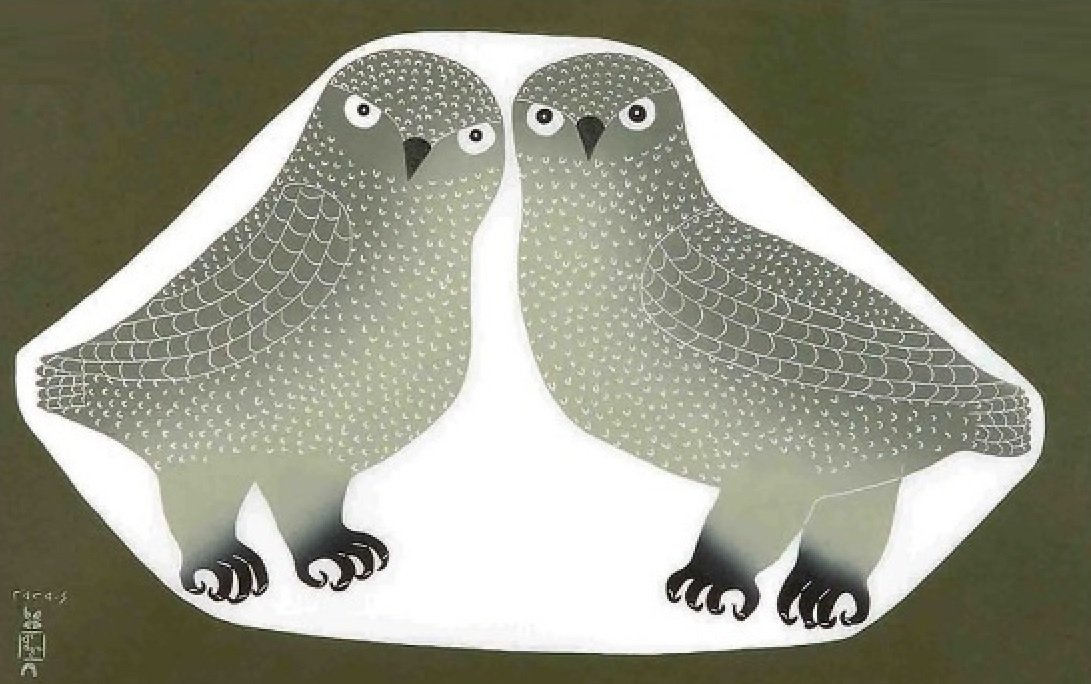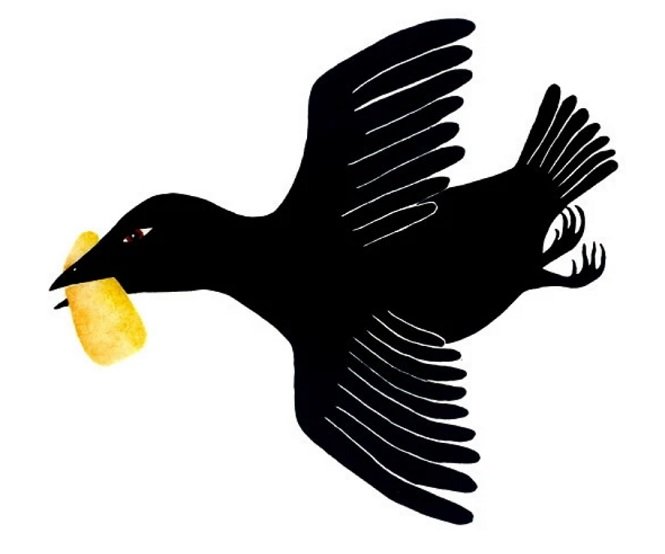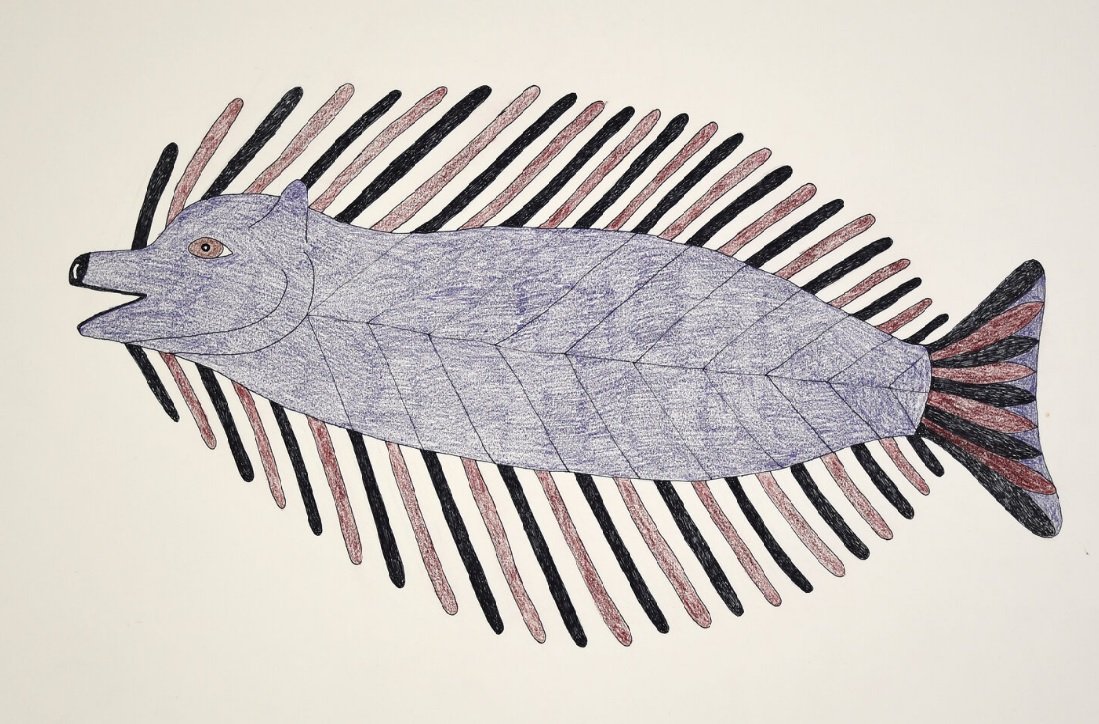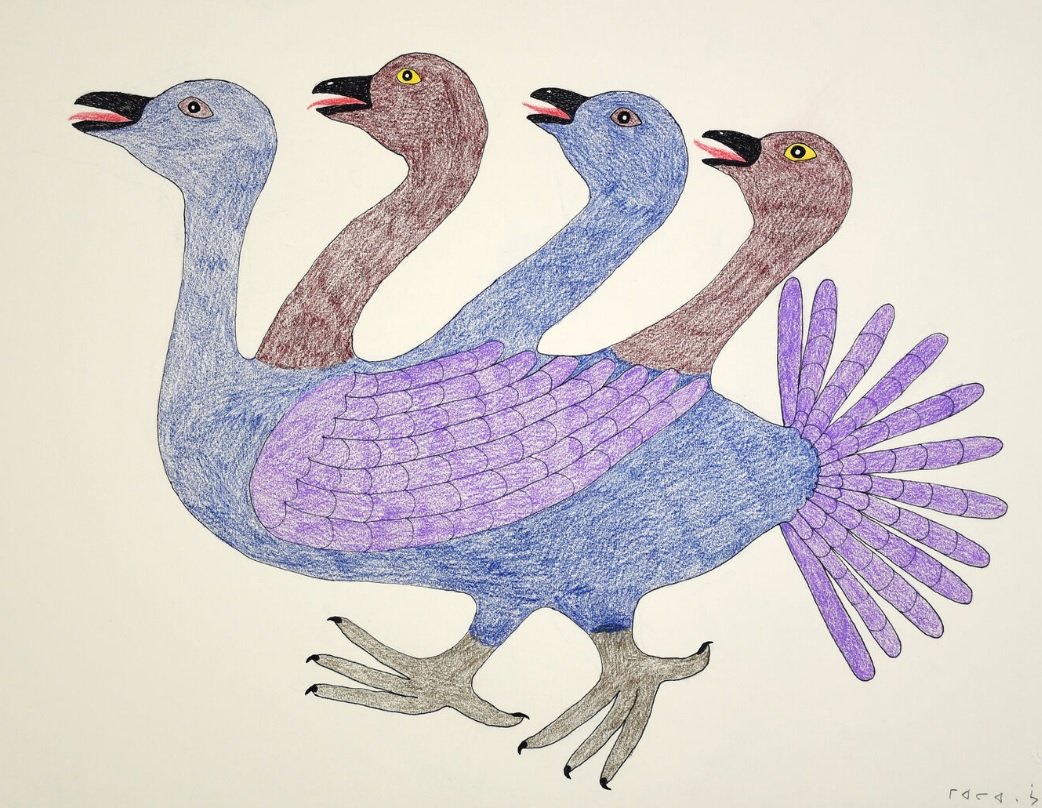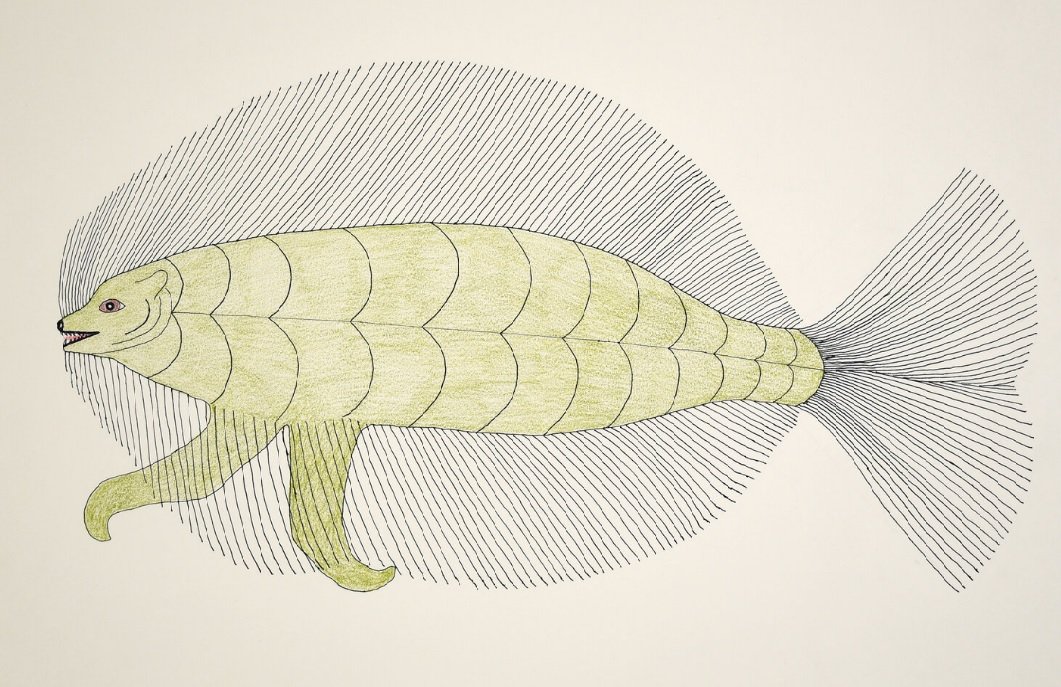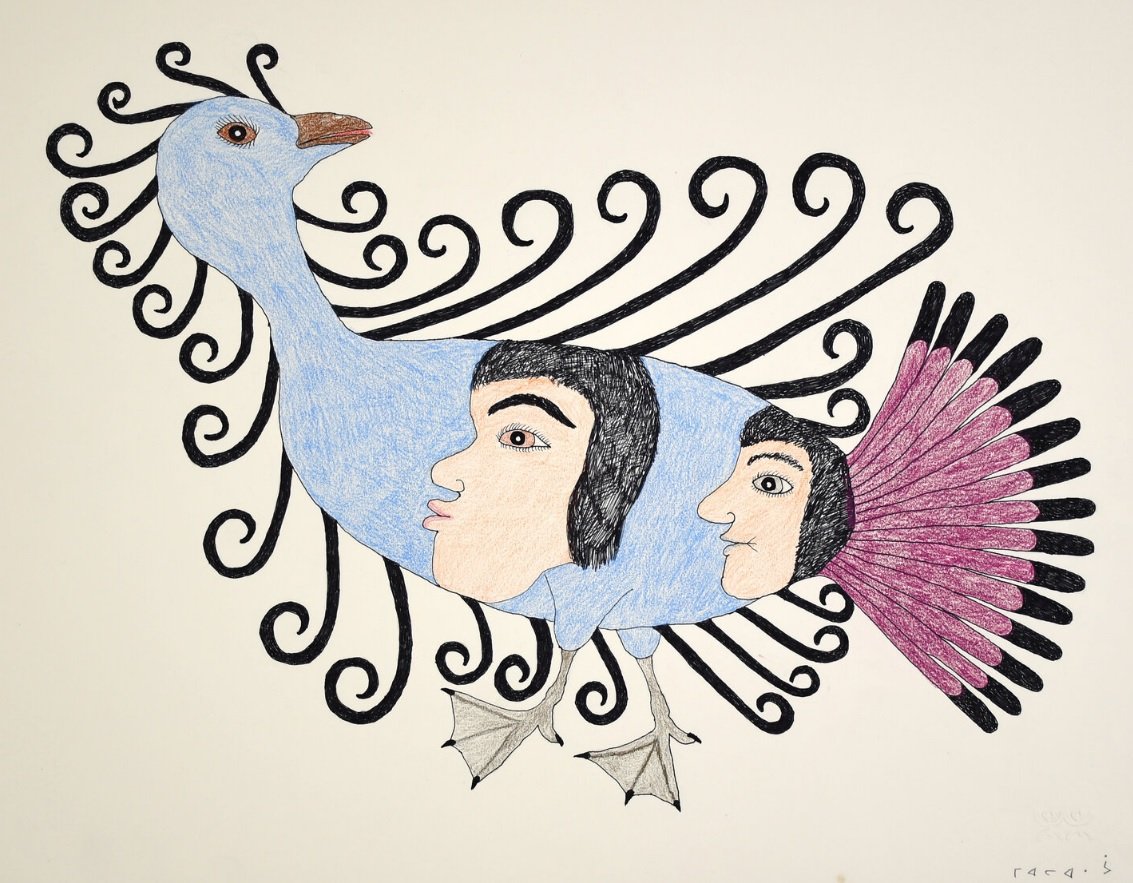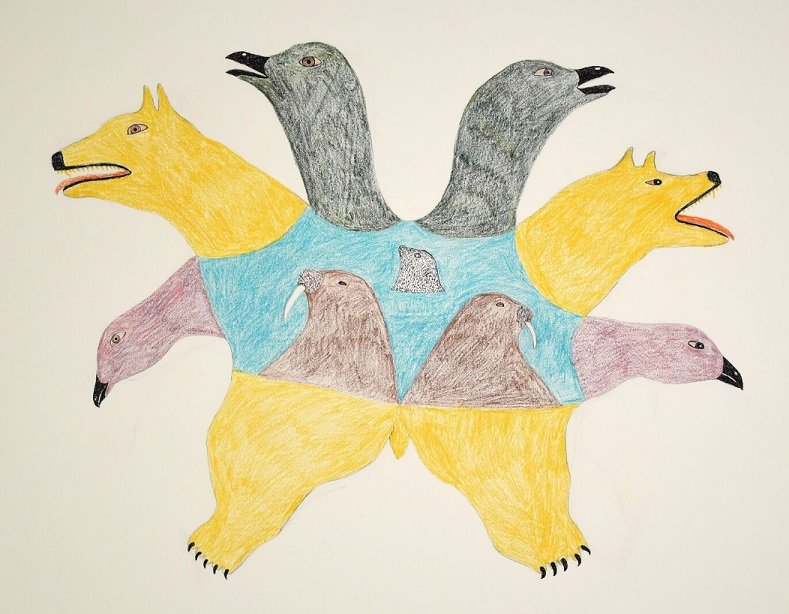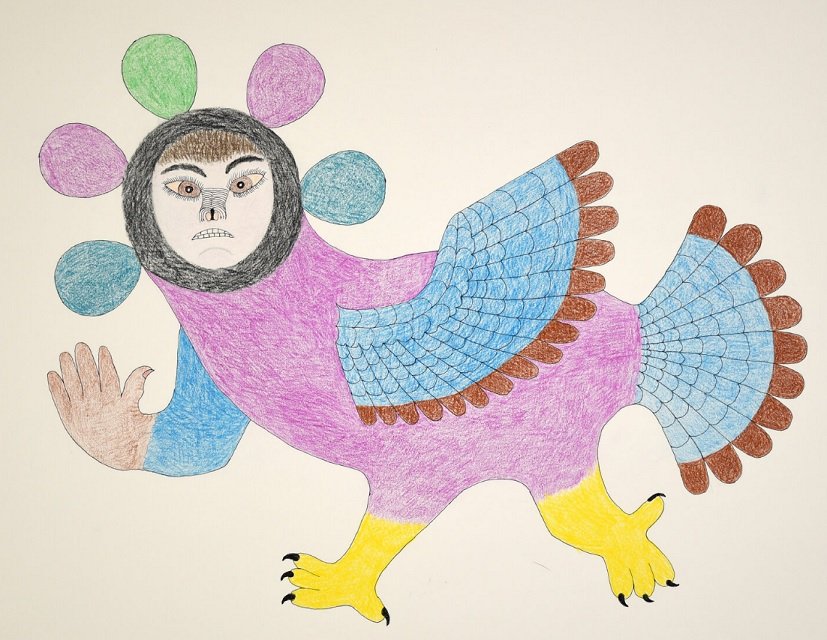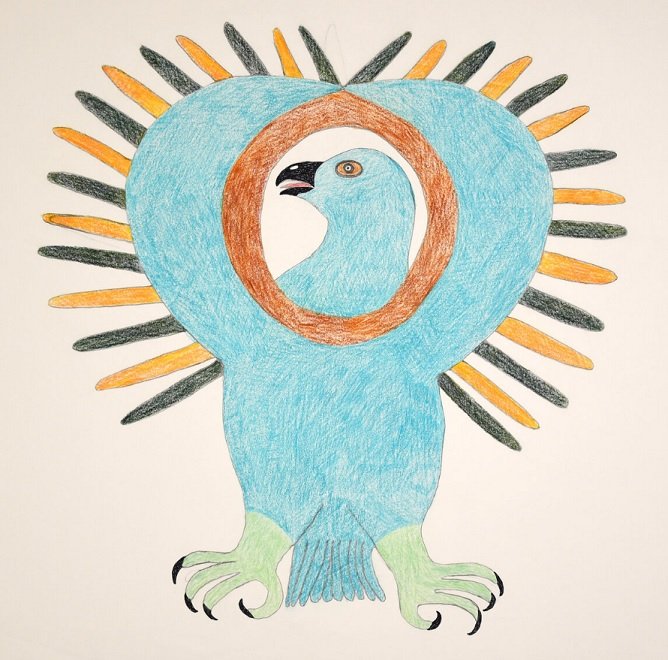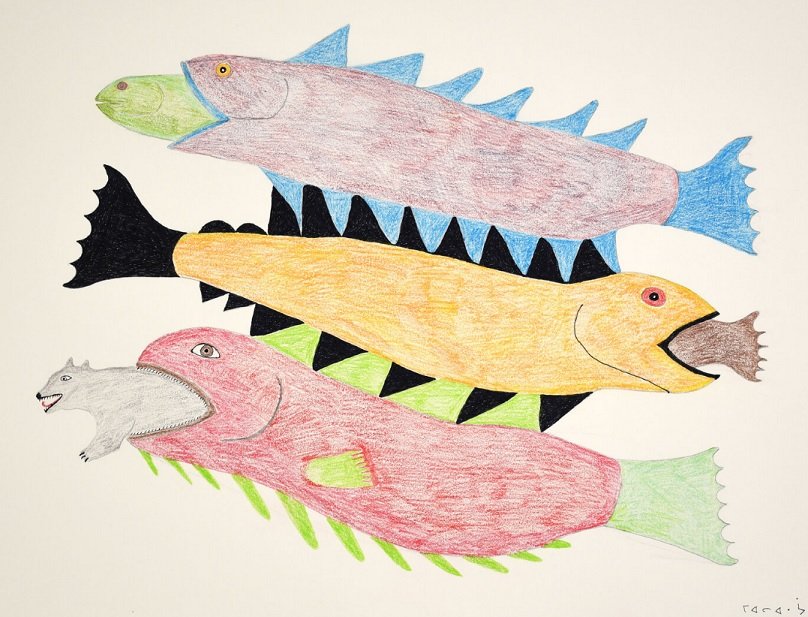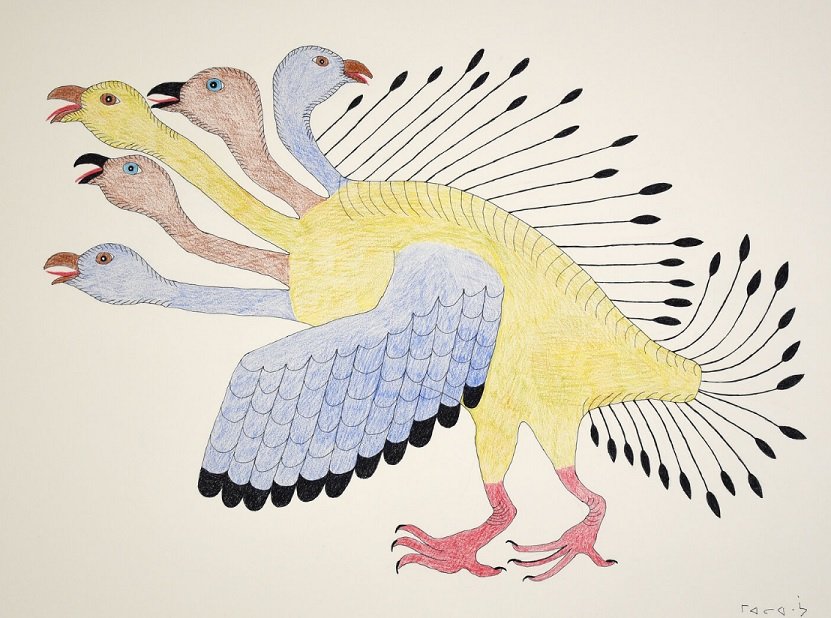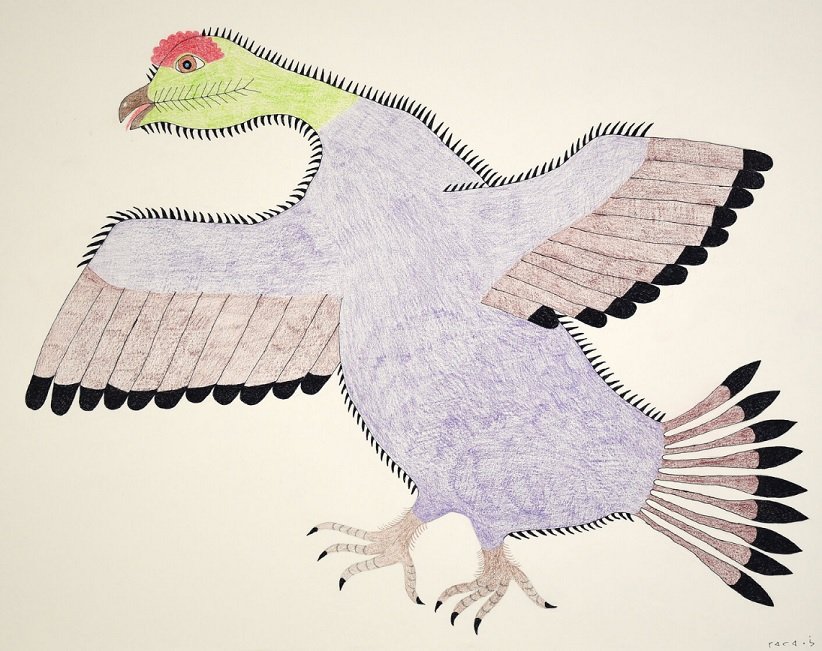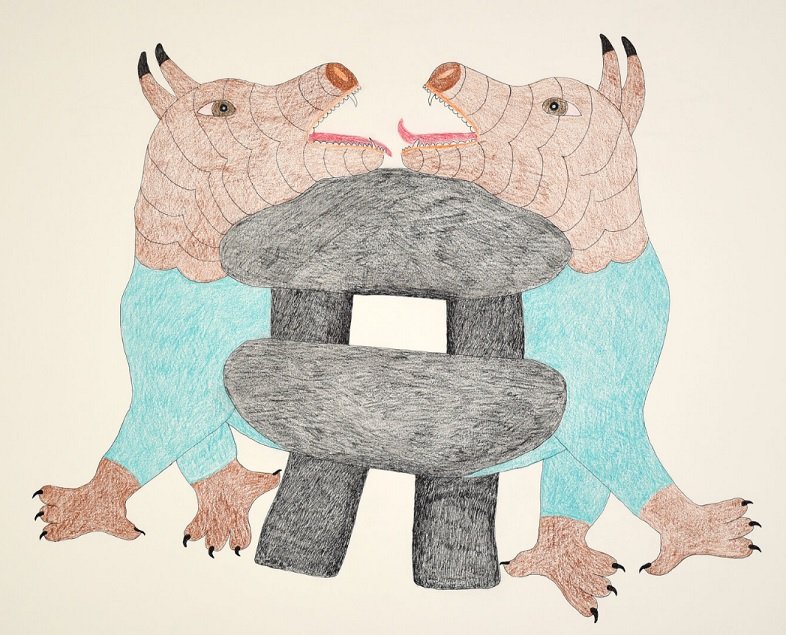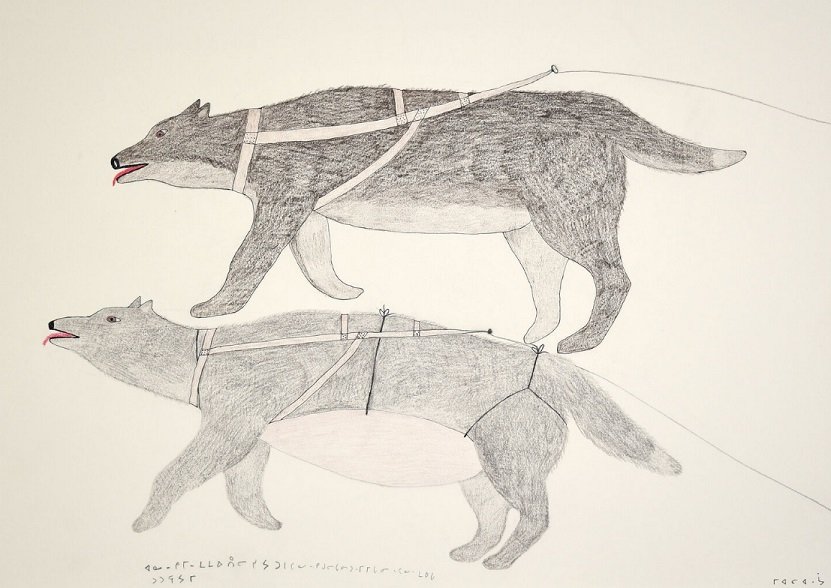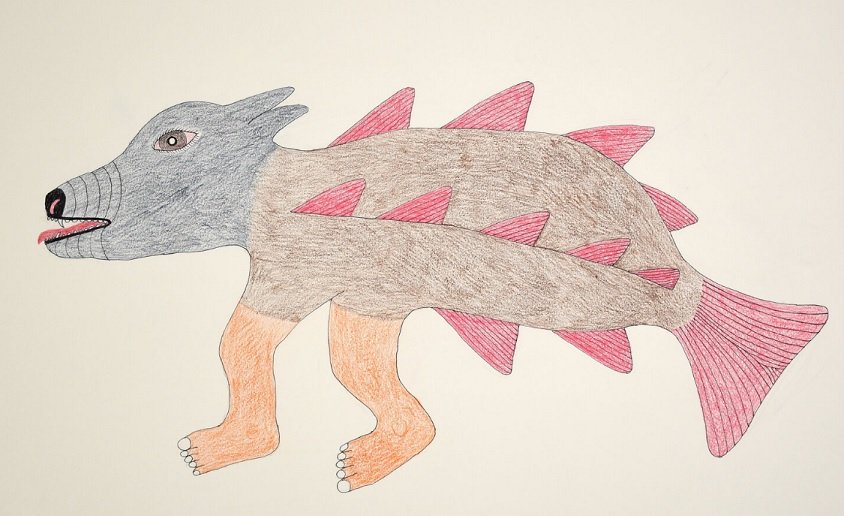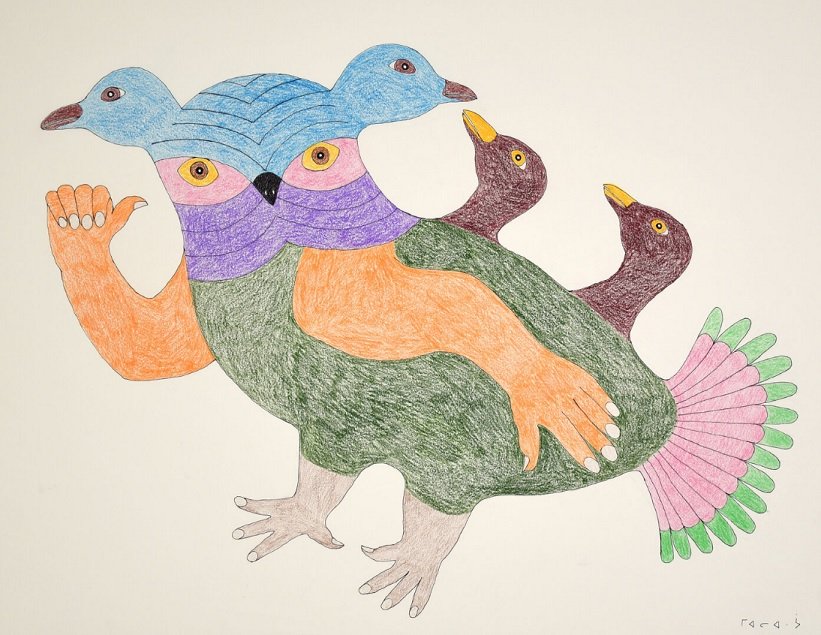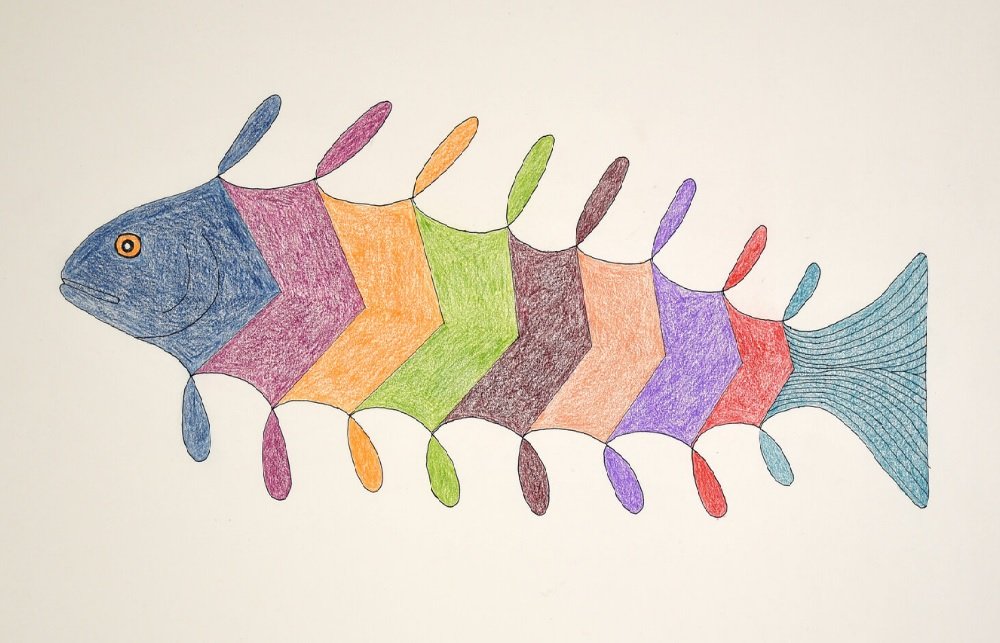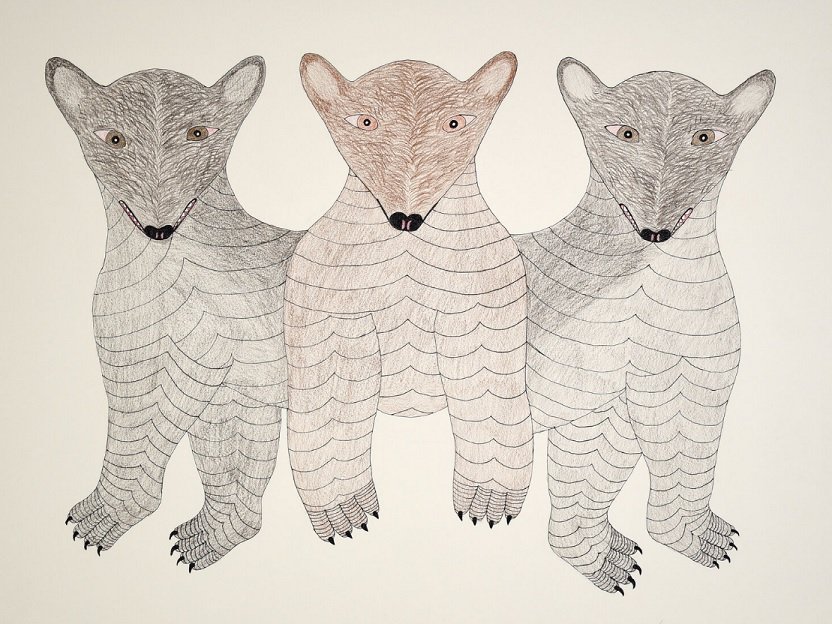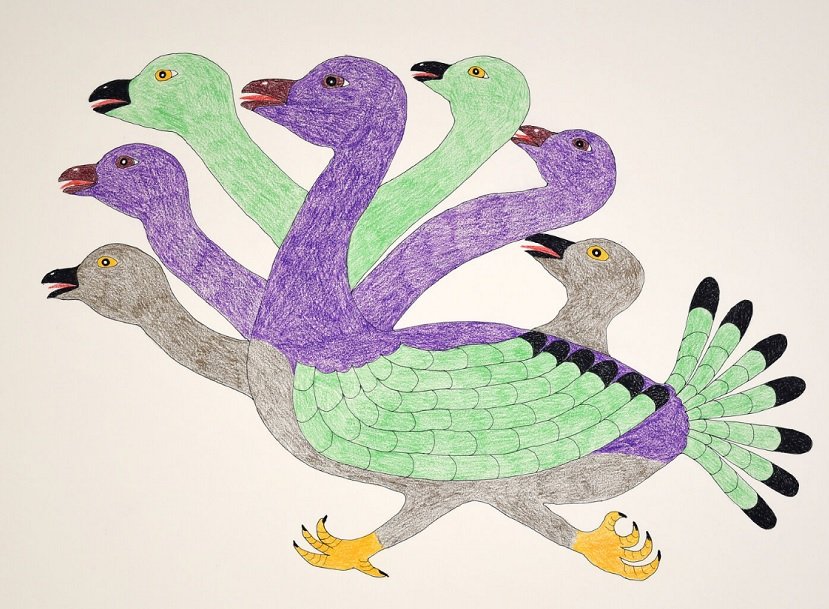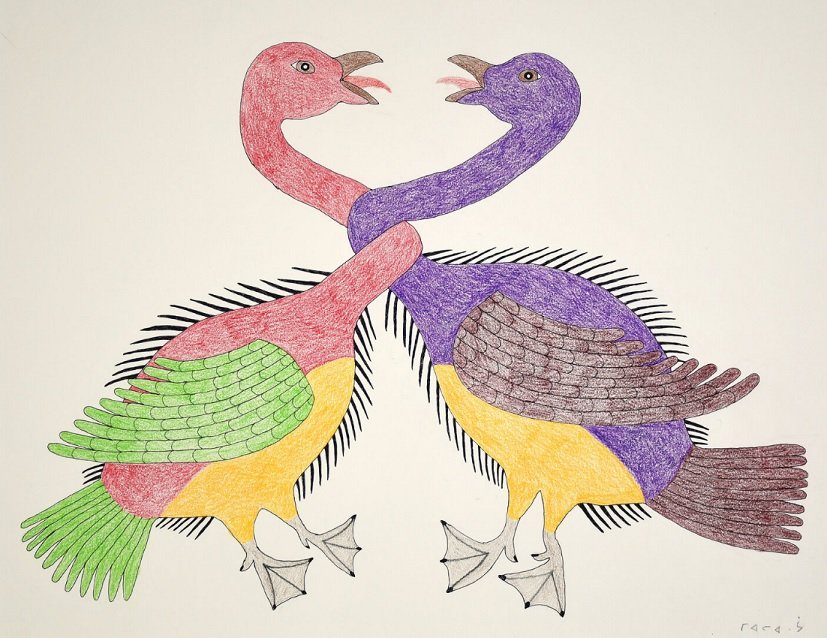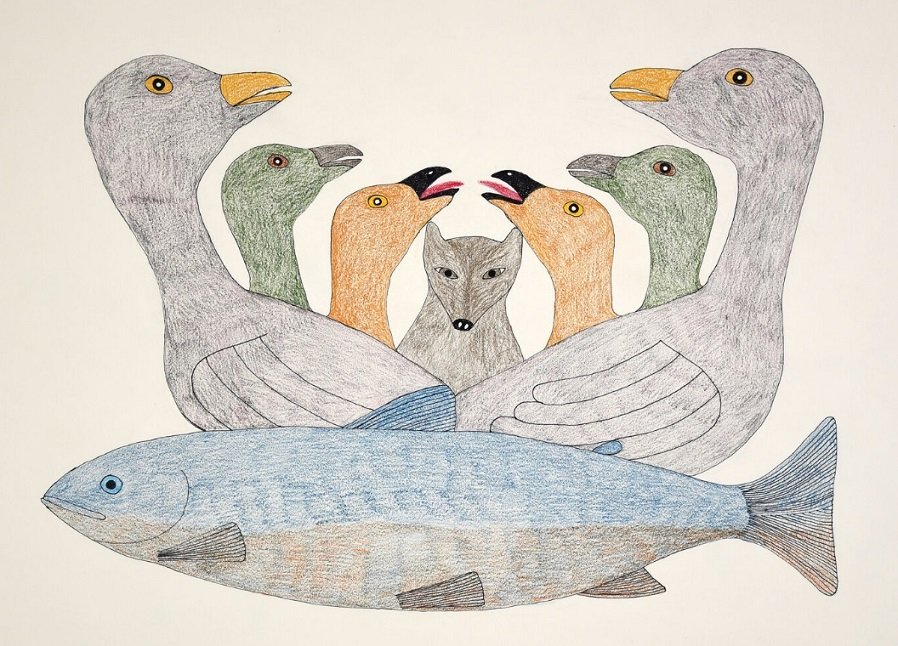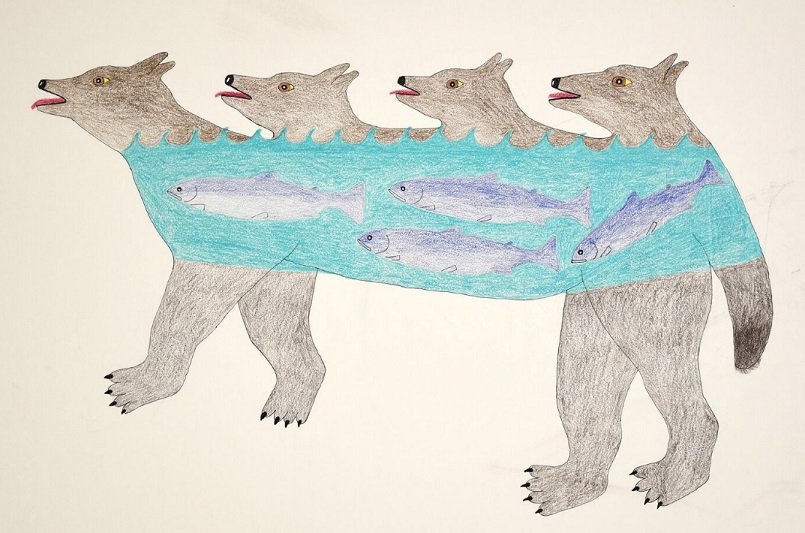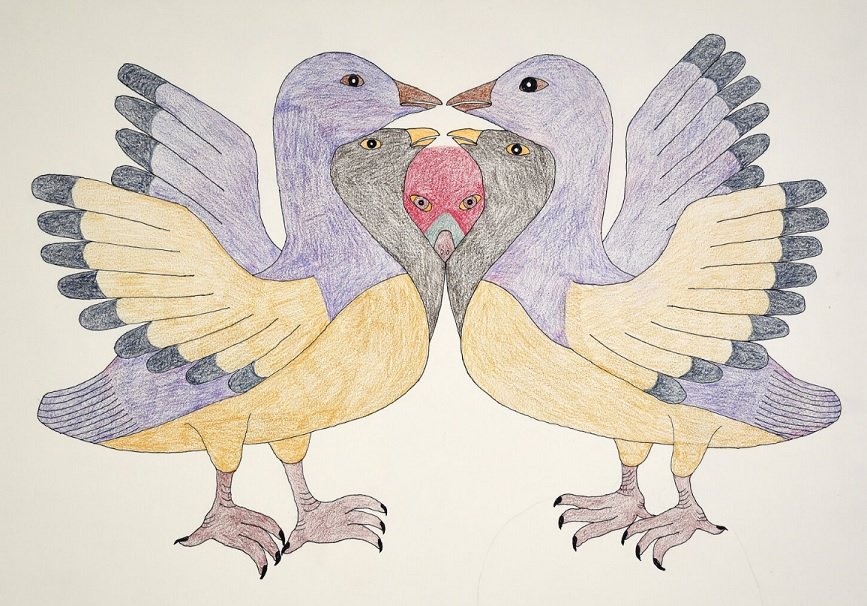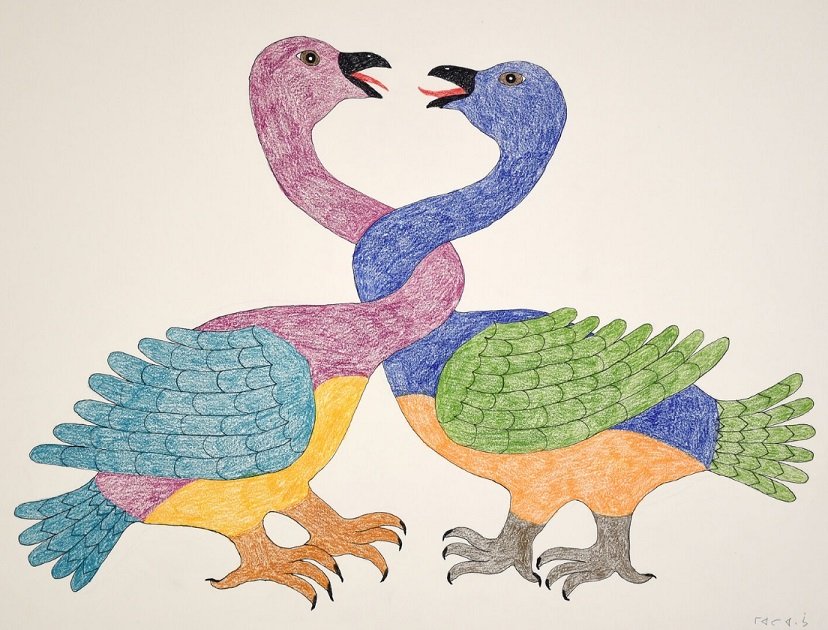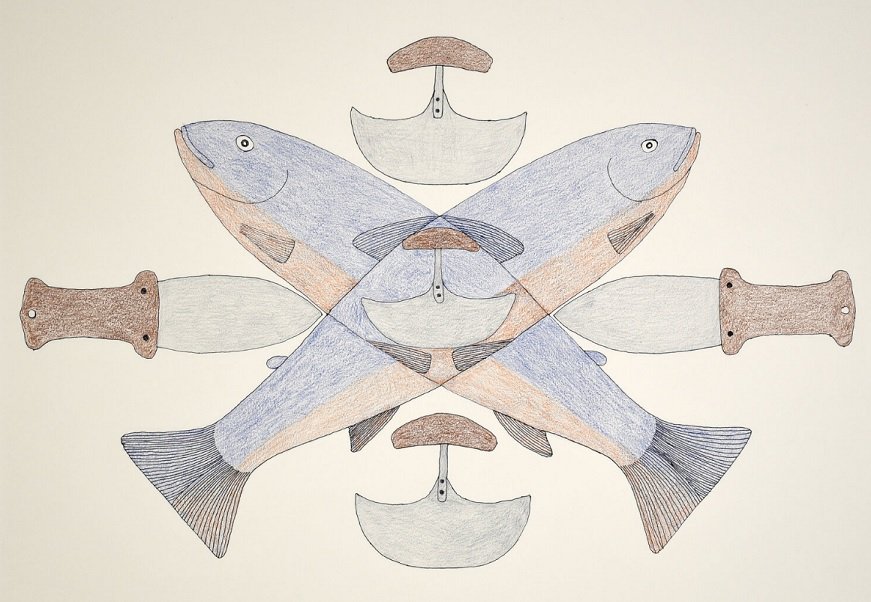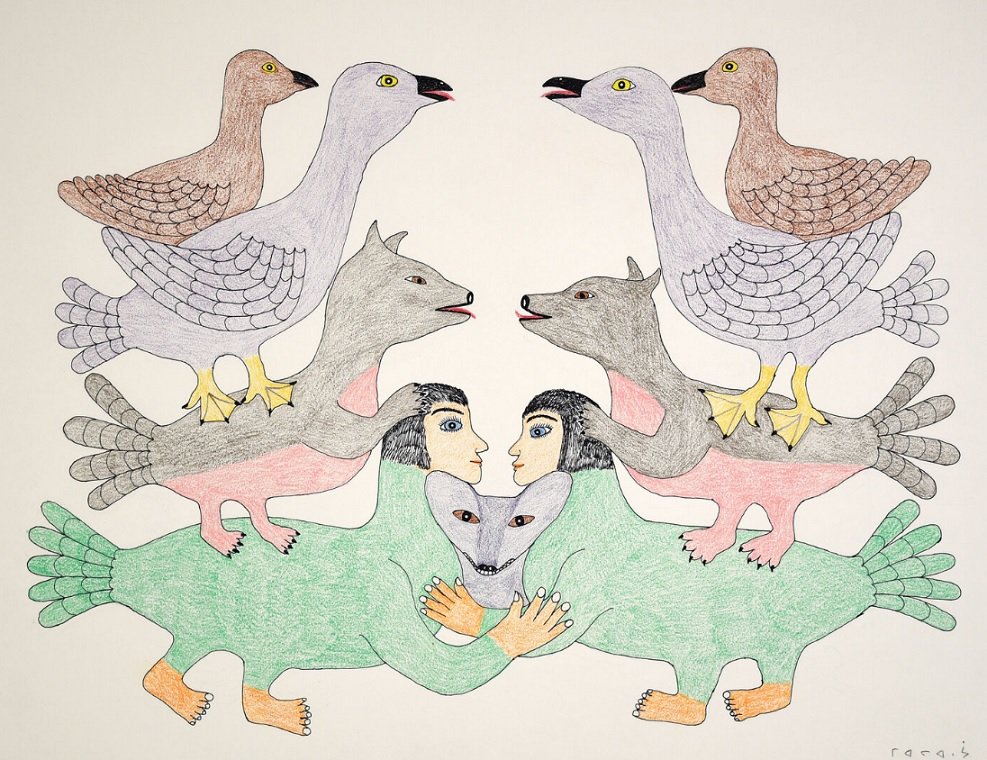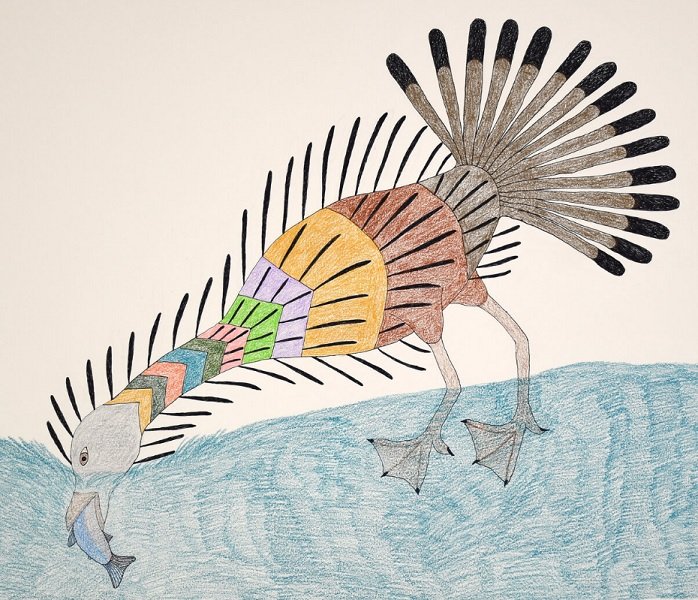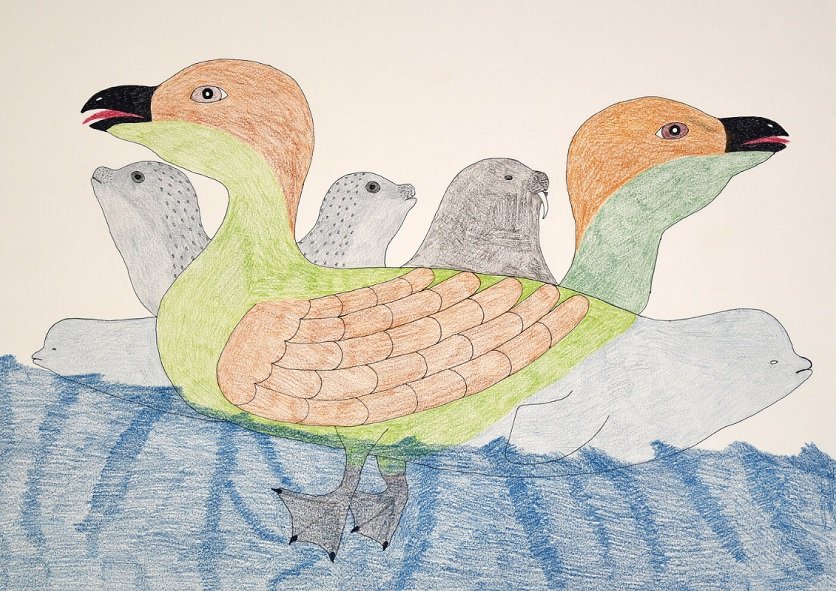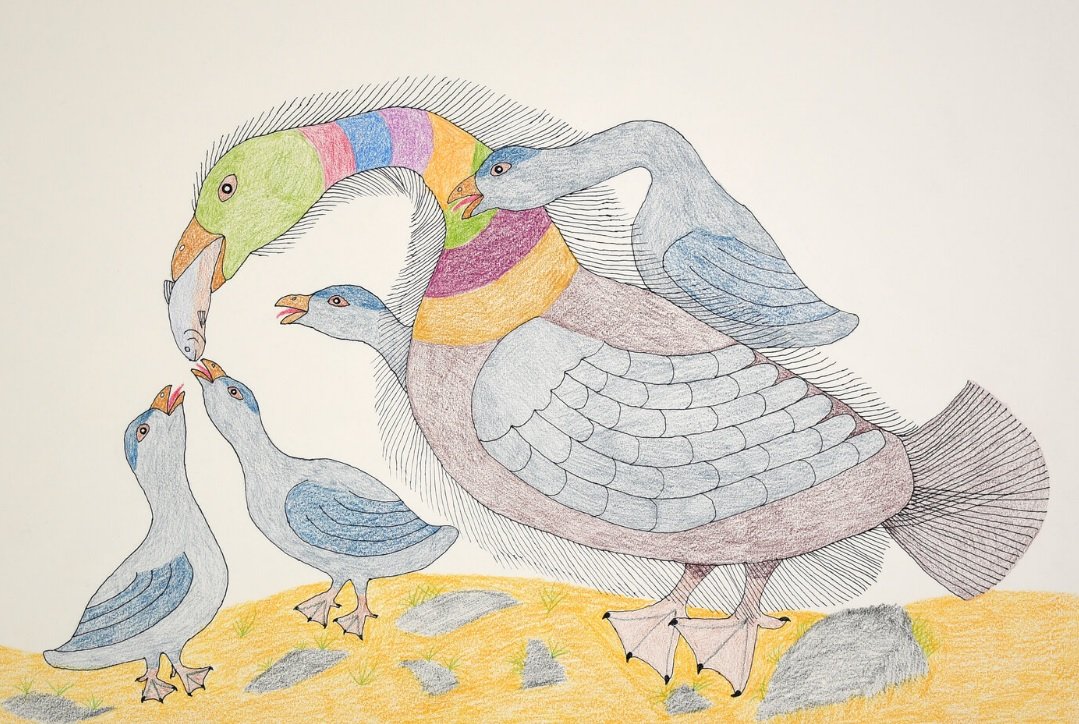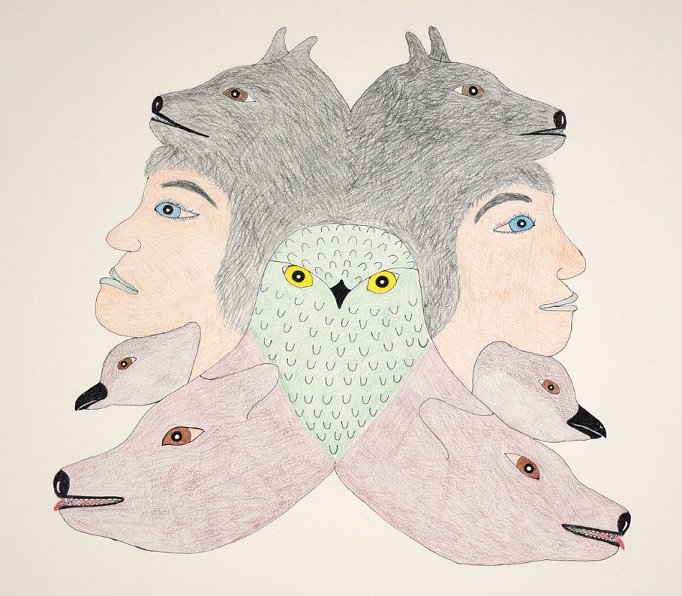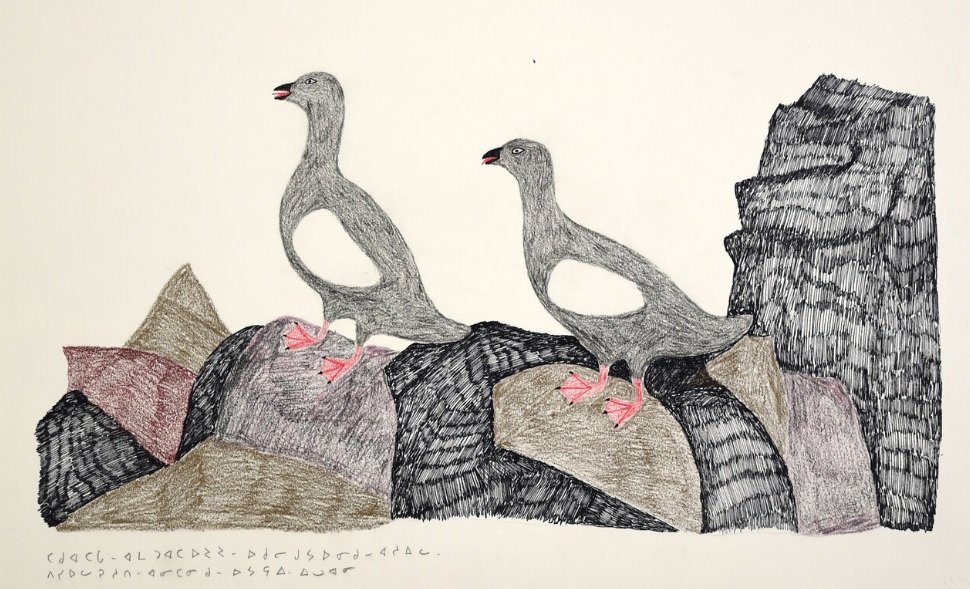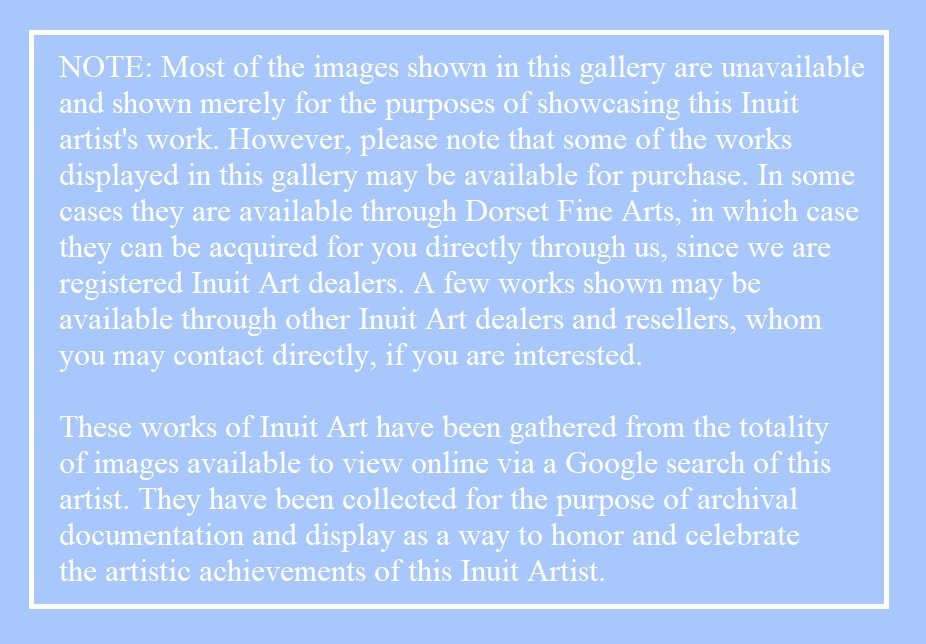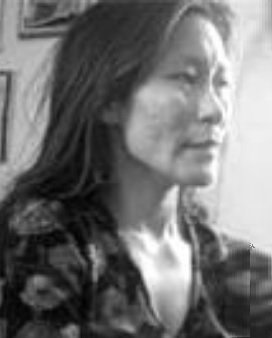
Mialia Jaw (Melia Jaw)
Mialia’s drawings and graphics are filled with a sense of delight and playfulness. From beautifully delicate and intricate drawings of birds to strangely attractive creatures and transformational compositions, her work is instantly recognizeable as her own.
Mialia Jaw is celebrated for her work in carving and graphic art. As a carver, she worked in stone to depict animal and human figures. Focusing her artistic energy on printmaking in later life, Jaw created colourful works depicting her personal experiences, and Inuit folklore. Born in 1934 at Qimmirtuq camp near Kimmirut, Jaw spent her childhood on the land. Known for being a storyteller, Jaw transformed her traditional knowledge into tangible artwork.
Mialia was married to Joe Jaw, a respected Inuit carver; three of their children are also artists. Her sons Mathew, Pootoogook, and Kingwatsiak are all carvers of some note. Mathew (known as Mathew Saviakjuk) is especially well-known for his powerful, stylized sculpture, and he is also Cape Dorset’s mayor—a position he has held for several years.
Jaw remained active throughout her life, maintaining a strong connection to the land and camping in the traditional manner down the coast, near Kinngait.
Jaw used many techniques to create her images. She experimented with lithography, etching, stone cuts, stencils and aquatint. Jaw’s artistic career was relatively short as she did not begin printmaking at the WBEC studios until 1996. During that decade, she made approximately ten pieces, with much of her process and success left undocumented and unknown.
Her most well known works, Stung (2005), and Owl and Hare (2004), show imagery of northern wildlife and use vibrant earth tones. Jaw’s familiarity with the land around Kinngait inspired her work. She printed images that showed the natural world she observed and depicted the cycle of life. In Titalittaq Returns, Jaw illustrates the Inuit legend of a man who was trapped on a desolate island. In the image, Titalittaq had made his way home by creating a makeshift raft of driftwood fastened with walrus bladders while community members rejoice upon his arrival. This image is one of her most accomplished and well-known pieces.
Jaw’s work was exhibited at Spirit Wrestler Gallery, in Vancouver, and was included in the Cape Dorset Annual Print Collection from 2004 to 2006. Her work is held in the collection of the Agnes Etherington Art Centre in Kingston. Mialia Jaw passed away in 2006.
Citations
1. Inuit Art Quarterly, “In Memoriam: Mialia Jaw” Inuit Art Quarterly 21, no. 3 (Fall 2006): 46.
2. Ann McElroy, “Working for the Traders and the Hospitals,” Nunavut Generations: Change and Continuity in Canadian Inuit Communities (Illinois: Waveland Press Inc., 2007: 58.
(Info provided by Inuit Art Foundation)
